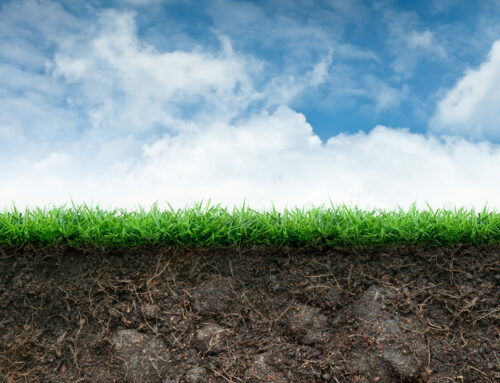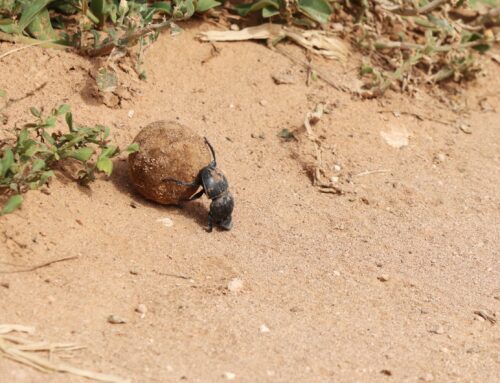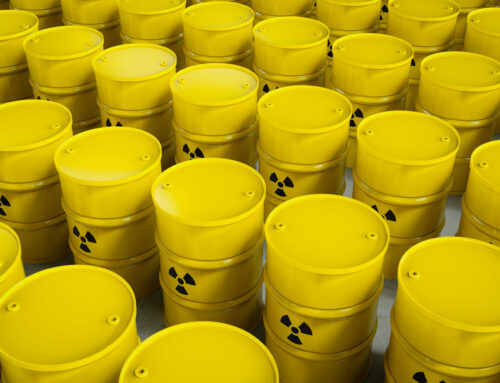“earth to earth, ashes to ashes, dust to dust…”
a Christian priests would say when burying the dead. We should also remember that the earth (soil) is feeding plants which are feeding animals and so on. Thus, without fertile soil there would be nothing for priests to do, because they, you or me would not even exist.
Ironically, it is kind of comforting to know that we have a fertile soil to return to.
Unfortunately, things seem to change lately. Fertile soil is devastated at an unprecedented pace. Estimates are that more than a third of Earth´s soil has been already degraded and over 90% could become degraded by 2050 (Global Symposium on Soil Erosion, 2019. fao.org.1). Main reasons are human activities such as unsustainable agriculture, deforestation, pollution and consequences of climate change such as water scarcity and soil erosion.
How and how much can soil microbiomes mitigate soil degradation?
Because this topic is large for a single blog article, we are going to elaborate it in several next episodes.
Previously we talked a lot about bacteria. Today, we will start with fungi or so called “Mycobiomes” (from Greek word “mykes”, meaning mushroom or fungus).
By the way, did you know what is the largest living organism on planet Earth?
I know, many would instantly think of a big blue whale. True, blue whales are big, long up to 33 meters, weighing up to 150 tonnes. However, a fungus Armillaria ostoyae (also named “Humongous fungus”) surpasses blue whales in size by several orders of magnitude. Namely, besides the visible above-ground parts (mushrooms), Armillaria, as several other types of fungi, spreads underground by shoestring-like structures called rhizomorphs (“rhiza” meaning root in Greek). Genetic analysis of A. ostoyae in the forests of Oregon (US), showed that in some cases one individual fungus (meaning all rhizomorphs are made of identical genetic material), spread on a surface of almost 10 square kilometers! With an estimated age of 8650 years, this fungus is also among the oldest known living organisms on Earth 2.
Besides animals, plants and microorganisms, fungi comprise another big “kingdom” of living beings. Similar to plants, they can´t move but their bodies can grow very long in a form of tiny, micrometer wide tubes called “hyphae” which are able to penetrate through the tiniest pores in the soil. Since hyphae are much thinner and longer than the hairs of plant roots, they can reach the places which the roots can´t. Part of the nutrients absorbed by hyphae, fungi provide to the plant roots. In exchange, they get some sugars synthesized by the plants 3. Thus, fungi are essential for plant growth and can be used to improve or restore the soil fertility 4.
Fungi also produce compounds which protect plants form other pests, such as worms or insects. Similar to the gut bacteria in humans, fungi communicate with their hosts (plants), activating their immune response. This is beneficial not only in case of attack by a pathogen but also physical stress for plants, such as drought or high salt 5.
Next level of cooperation between plants and fungi is connection of different plants through the underground network of fungal hyphae. In this way, signals are exchanged between distant plants and the plant response coordinated 6.
All of the above mentioned relationships between plants and fungi in the soil are a beautiful example of biological symbiosis called “Mycorrhiza”. More than 90% of all plant have mycorrhiza. So, no fungi – no plant. At least most of them.
Anyhow, plants are not the only one who benefit from fungi in the soil. Similar to underground “highways”, fungal hyphae enable transport of microorganisms to farther places in the soil they could never travel alone 7. This can be beneficial, but also dangerous if a pathogenic microorganism gets transported.
In our previous blog serial we discussed bioremediation. Fungi are powerful in bioremediation of organic pollutants, heavy metals and radioactive compounds.
Last but not least, fungi are crucial for final degradation of all organic matter in the soil. After the priest finishes his prayer, fungi will take care that you will be successfully converted from “earth, ashes and dust” to compost – the most fertile top soil.
Follow us in the next episode when we will talk about importance of bacteria in soil microbiomes…
Further readings:
- fao.org. Global Symposium on Soil Erosion. https://www.fao.org/about/meetings/soil-erosion-symposium/key-messages/en/.
- Schmitt, C., L. & Tatum, M., L. The Malheur National Forest Location of the World’s Largest Living Organism [The Humongous Fungus]. (2008).
- Harrison, M. J. SIGNALING IN THE ARBUSCULAR MYCORRHIZAL SYMBIOSIS. Annu. Rev. Microbiol. 59, 19–42 (2005).
- Svenningsen, N. B. et al. Suppression of the activity of arbuscular mycorrhizal fungi by the soil microbiota. ISME J 12, 1296–1307 (2018).
- Jung, S. C., Martinez-Medina, A., Lopez-Raez, J. A. & Pozo, M. J. Mycorrhiza-Induced Resistance and Priming of Plant Defenses. J Chem Ecol 38, 651–664 (2012).
- Babikova, Z. et al. Underground signals carried through common mycelial networks warn neighbouring plants of aphid attack. Ecol Lett 16, 835–843 (2013).
- Yang, P. & van Elsas, J. D. Mechanisms and ecological implications of the movement of bacteria in soil. Applied Soil Ecology 129, 112–120 (2018).





